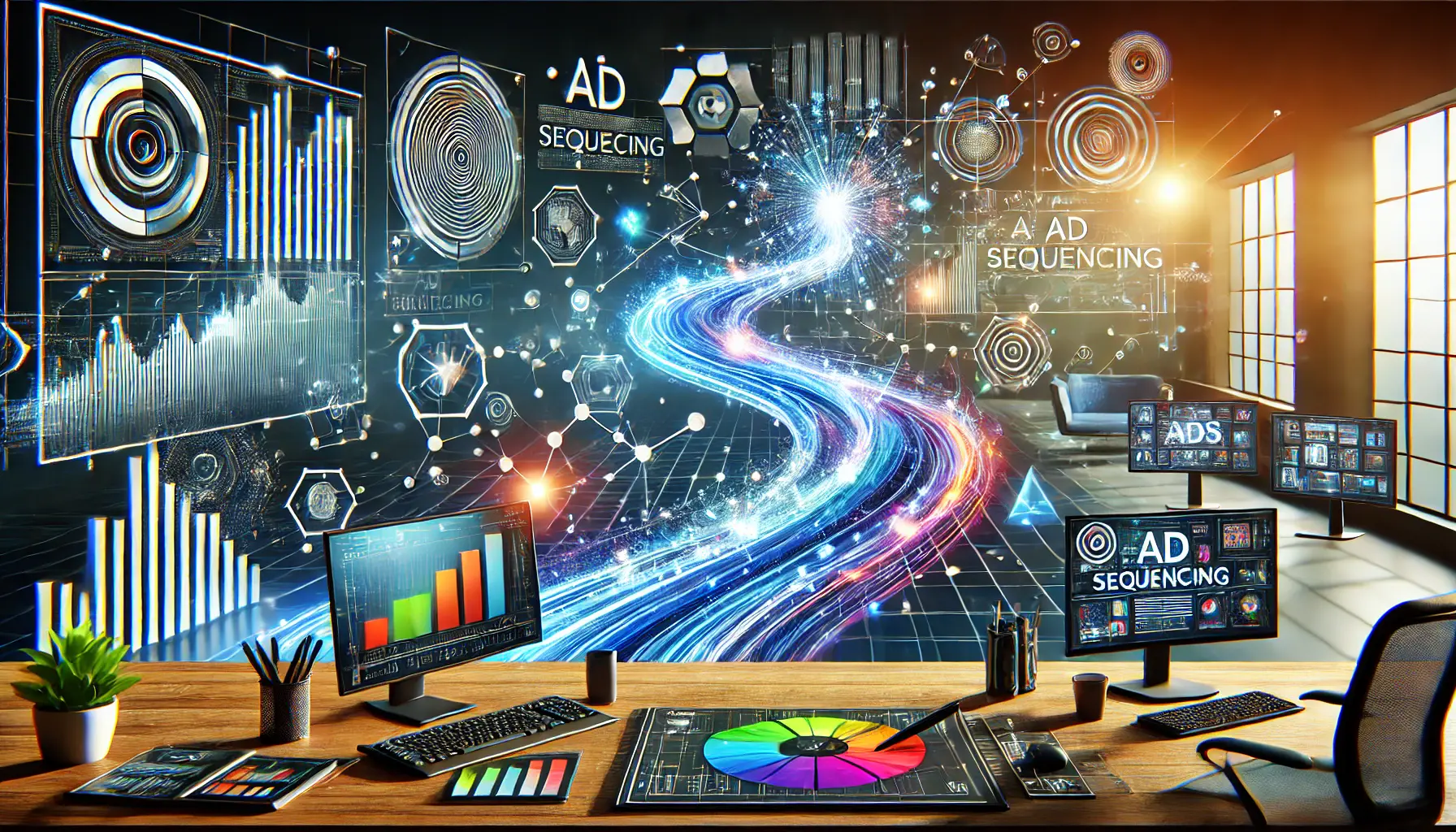The art of storytelling has evolved significantly with the advent of technology, and one of the most groundbreaking advancements in this field is the introduction of OpenAI’s Sora.
This innovative tool has opened up new avenues for creators, allowing them to craft narratives in ways that were previously unimaginable.
Sora, with its ability to transform text into dynamic visual content, stands at the forefront of this revolution, offering storytellers a unique platform to bring their stories to life.
At its core, Sora is designed to understand and interpret narratives, converting them into engaging video content.
This capability not only enhances the storytelling process but also democratizes the creation of visual narratives, making it accessible to a wider range of creators.
Whether you are a seasoned writer, a filmmaker, or someone just starting out, Sora offers the tools to explore the depths of your creativity and to present your stories in a visually captivating format.
- Understanding the Power of Sora
- Key Elements of Crafting Narratives with Sora
- Integrating Visuals with Narrative Content
- Overcoming Challenges in Visual Storytelling
- Exploring the Potential of AI in Storytelling
- Strategies for Engaging Audience with Visual Stories
- Maximizing the Impact of Your Visual Narratives
- Embracing the Future of Storytelling with Sora
- Navigating the World of Sora: A Storytelling FAQ
Understanding the Power of Sora
The journey into narrative crafting with Sora begins with an appreciation of its technological prowess.
At its heart, Sora leverages advanced AI algorithms to analyze text inputs and translate them into video sequences.
This process involves a deep understanding of the narrative elements such as characters, settings, and plot developments, ensuring that the resulting videos are not just visually appealing but also true to the storyteller’s vision.
For storytellers, this means the ability to create rich, immersive worlds without the need for extensive resources typically associated with video production.
Sora’s AI-driven approach simplifies the creative process, enabling authors to focus on the essence of their stories while leaving the complexities of visual representation to the technology.
This democratization of video content creation marks a significant shift in how stories can be told and shared, opening up endless possibilities for narrative exploration.
Expanding Creative Horizons
The implications of Sora’s capabilities extend far beyond traditional storytelling formats.
With Sora, narratives can transcend the written word, offering audiences new ways to experience stories.
This transition from text to video not only enhances the storytelling experience but also caters to the growing demand for visual content in today’s digital age.
Storytellers can now craft narratives that are not only told but also shown, providing a more immersive and engaging experience for their audience.
Moreover, Sora’s intuitive design means that it is accessible to creators with varying levels of technical expertise.
Whether you are experimenting with visual storytelling for the first time or looking to add a new dimension to your narrative projects, Sora provides a platform that is both powerful and user-friendly.
This ease of use encourages experimentation and innovation, allowing storytellers to push the boundaries of their creative expression.
Sora’s technology empowers storytellers to transform their narratives into dynamic visual experiences, expanding the possibilities of narrative art and opening up new avenues for creative expression.
Key Elements of Crafting Narratives with Sora
Delving deeper into the narrative crafting process with Sora, it becomes evident that a successful story hinges on several key elements.
Understanding these components is crucial for storytellers aiming to leverage Sora’s capabilities to their fullest potential.
These elements not only serve as the foundation of a compelling narrative but also ensure that the story translates effectively into visual content.
Character Development
At the heart of every narrative lies its characters.
They are the vessels through which stories are told and experienced.
In the context of Sora, character development takes on a new dimension, as creators must envision how their characters will appear and act in a visual medium.
This requires a detailed understanding of each character’s traits, motivations, and evolution throughout the story.
Effective character development involves:
- Creating detailed character backstories.
- Understanding characters’ motivations and how they drive the plot.
- Visualizing characters’ physical appearances and expressions for video adaptation.
Setting and World-Building
The setting of a narrative provides the backdrop against which the story unfolds.
In visual storytelling, the setting is not just described but shown, making it an integral part of the narrative experience.
Sora allows storytellers to bring their settings to life, from bustling cityscapes to serene landscapes, enhancing the immersive quality of the narrative.
Key considerations for setting and world-building include:
- Describing locations in detail to aid in visual creation.
- Considering how the setting influences the story and characters.
- Utilizing Sora’s capabilities to create dynamic environments that enhance the narrative.
Plot and Structure
The plot is the sequence of events that make up a story, and its structure is how these events are organized.
A well-crafted plot keeps the audience engaged, while a coherent structure ensures that the story flows smoothly from beginning to end.
When using Sora, the plot and structure must be carefully planned to ensure that the visual narrative is compelling and easy to follow.
Effective plot and structure development involves:
- Outlining the main events of the story to guide the visual representation.
- Ensuring a logical progression of scenes and transitions.
- Incorporating visual cues and elements that support the narrative’s pacing and mood.
Incorporating these key elements into your narrative ensures that your story is not only engaging in written form but also captivating when transformed into video content with Sora.
Integrating Visuals with Narrative Content
The integration of visuals with narrative content is a critical aspect of storytelling with Sora.
This process involves more than just converting text into video; it requires a thoughtful approach to how visual elements can enhance and complement the narrative.
Visuals serve as a powerful tool to convey emotions, settings, and character dynamics that might take hundreds of words to describe in text.
Choosing the Right Visuals
When integrating visuals into your narrative, the selection of images, scenes, and animations must align with the story’s tone, mood, and pace.
This alignment ensures that the visual elements reinforce rather than distract from the narrative.
Considerations include:
- The emotional impact of visual choices on the audience.
- Visual consistency with the narrative’s setting and time period.
- The use of color, lighting, and composition to convey mood and atmosphere.
Effective visual integration also involves understanding the narrative’s key moments and deciding how best to visualize these to make a lasting impact on the viewer.
Visual Storytelling Techniques
Visual storytelling with Sora utilizes a variety of techniques to bring narratives to life.
These techniques range from the use of symbolic imagery to the implementation of dynamic camera movements that mimic human observation.
Storytellers can enhance their narratives by:
- Employing close-ups to highlight emotional moments or important details.
- Using wide shots to establish settings or convey the scale of a scene.
- Incorporating movement to add energy and pace to the narrative.
Each of these techniques can be tailored to fit the story’s needs, creating a rich, visual language that complements the written narrative.
Translating Text to Visual Narratives
The ultimate challenge in using Sora lies in the translation of text to visual narratives.
This process is not merely about literal representation but about capturing the essence of the story in a visual format.
It involves:
- Identifying the narrative’s most visually compelling elements.
- Deciding on the visual style and approach that best suits the story.
- Ensuring that visual transitions and sequences smoothly narrate the story without verbal explanation.
This translation requires a deep understanding of both the narrative and visual storytelling principles, allowing storytellers to create videos that are not only visually stunning but also deeply engaging and true to the original story.
The integration of visuals with narrative content is not just about the aesthetics but about deepening the audience’s engagement with the story, making every scene, character, and setting more vivid and memorable.
Overcoming Challenges in Visual Storytelling
While Sora offers a revolutionary platform for transforming narratives into visual stories, storytellers may encounter several challenges in this process.
Addressing these challenges is crucial for creating compelling and coherent visual narratives that resonate with audiences.
Understanding and navigating these obstacles can significantly enhance the storytelling experience.
Ensuring Narrative Coherence
One of the primary challenges in visual storytelling with Sora is maintaining narrative coherence.
As stories transition from text to video, ensuring that the narrative remains clear and engaging throughout the visual medium is essential.
This involves:
- Strategically planning the sequence of visual scenes to reflect the narrative’s flow.
- Using visual cues and transitions to guide the audience through the story.
- Maintaining consistency in character portrayal and setting to avoid confusion.
Coherence is key to keeping the audience engaged and ensuring that the story’s message is effectively communicated through visuals.
Matching Visuals with Narrative Tone
Another challenge is aligning the visuals with the narrative’s tone.
The tone of a story can range from light-hearted and humorous to dark and serious.
The visual elements chosen must reflect this tone accurately to enhance the narrative’s emotional impact.
This requires:
- Choosing colors, lighting, and visual styles that complement the story’s mood.
- Adjusting the pacing of visual transitions to match the narrative’s rhythm.
- Employing visual metaphors and symbolism to deepen the narrative’s thematic elements.
Successfully matching visuals with the narrative tone can significantly amplify the story’s emotional resonance with the audience.
Adapting Complex Narratives for Visual Media
Complex narratives, with intricate plots and deep themes, pose a particular challenge when adapting them for visual media.
The richness of these stories must be preserved in the transition, without oversimplifying or losing critical narrative elements.
Strategies for adapting complex narratives include:
- Identifying core story elements that are essential for understanding the narrative.
- Using visual symbolism to represent complex themes and ideas.
- Creating visual summaries or montages to convey intricate plot developments efficiently.
Adapting complex narratives requires a careful balance between simplification for visual clarity and the preservation of the story’s depth and complexity.
Overcoming these challenges in visual storytelling not only enhances the quality of the narrative but also deepens the audience’s connection to the story, making the visual experience as impactful as the written word.
Exploring the Potential of AI in Storytelling
The advent of AI technologies like Sora has significantly expanded the possibilities for storytelling, offering new ways to create and share narratives.
Exploring the potential of AI in storytelling involves understanding its capabilities, the innovative approaches it enables, and the future possibilities it holds for creators and audiences alike.
Enhancing Creativity with AI
AI technology does not replace the creative process; instead, it enhances it by providing tools that can bring a storyteller’s vision to life in ways previously unimaginable.
Sora, for example, allows storytellers to:
- Automatically generate visual content that matches their narrative’s tone and style.
- Experiment with different visual representations of their stories, enabling rapid iteration and creativity.
- Access a broader range of storytelling techniques without the need for extensive technical skills or resources.
This augmentation of the creative process opens up new avenues for storytelling, making it more accessible and versatile.
Personalizing Stories for Diverse Audiences
AI’s ability to analyze and interpret data can also be leveraged to personalize stories for different audiences.
By understanding viewer preferences and behaviors, AI can tailor narratives to suit individual tastes, making stories more engaging and relatable.
This personalization can take many forms, from adjusting the story’s pacing and visual style to selecting themes and characters that resonate with the audience.
The potential for personalized storytelling with AI is vast, offering opportunities to connect with audiences on a deeper level and create more meaningful narrative experiences.
Future Directions in AI-Driven Storytelling
As AI technology continues to evolve, so too will its applications in storytelling.
Future directions may include:
- More sophisticated AI models capable of generating increasingly complex and nuanced visual narratives.
- Interactive storytelling experiences where audiences can influence the direction of the narrative in real-time.
- The integration of virtual and augmented reality technologies to create immersive storytelling environments.
These advancements promise to further revolutionize the field of storytelling, offering new ways for creators to express themselves and for audiences to experience narratives.
The potential of AI in storytelling is only beginning to be tapped. As technologies like Sora evolve, they will continue to transform the landscape of narrative creation, offering new tools and possibilities for storytellers to explore.
Strategies for Engaging Audience with Visual Stories
Engaging an audience with visual stories requires a strategic approach that goes beyond the mere presentation of content.
It involves crafting narratives that resonate on a personal level, utilizing visual elements effectively, and leveraging the unique capabilities of platforms like Sora to captivate and maintain audience interest.
Creating Relatable Characters and Scenarios
At the core of any engaging story are characters and scenarios that the audience can relate to.
This connection is even more critical in visual storytelling, where viewers must be drawn into the narrative through both the plot and the visual presentation.
Strategies for achieving this include:
- Developing multi-dimensional characters with relatable flaws, goals, and growth arcs.
- Constructing scenarios that reflect real-life experiences or universal themes.
- Using visual cues to enhance character development and narrative depth.
Relatable characters and scenarios help establish an emotional connection with the audience, making the visual story more compelling and memorable.
Leveraging Visual Dynamics to Enhance Storytelling
The dynamic nature of visual storytelling offers unique opportunities to engage audiences.
By thoughtfully incorporating visual elements such as movement, color, and composition, storytellers can:
- Highlight key narrative moments, drawing the viewer’s attention to important plot developments or character revelations.
- Use visual contrast and variation to maintain interest and prevent monotony.
- Employ symbolic imagery to convey deeper meanings or themes without explicit explanation.
These visual dynamics play a crucial role in keeping the audience engaged and immersed in the story.
Interactive and Participatory Elements
Incorporating interactive and participatory elements into visual stories can significantly enhance audience engagement.
With technologies like Sora, storytellers have the opportunity to:
- Invite viewers to influence the story’s direction, creating a more personalized and engaging experience.
- Utilize social media platforms to encourage audience participation through comments, polls, and shared content.
- Offer behind-the-scenes insights or alternate storylines to foster a deeper connection with the narrative and its creators.
Interactive and participatory elements not only make the storytelling experience more engaging but also build a community around the narrative, increasing its impact and reach.
Engaging audiences in visual storytelling is an art that combines relatable content, strategic use of visual elements, and interactive experiences to create narratives that resonate deeply and leave a lasting impression.
Maximizing the Impact of Your Visual Narratives
To maximize the impact of visual narratives, storytellers must not only focus on the content and its presentation but also on how these stories are shared and experienced by the audience.
The final step in crafting narratives with Sora involves strategic dissemination, audience engagement, and the effective use of feedback to refine and enhance storytelling techniques.
Choosing the Right Platforms for Distribution
The choice of platform can significantly affect the reach and impact of a visual narrative.
Different platforms cater to varied audiences and offer distinct advantages for storytelling.
Considerations include:
- Selecting platforms that align with the target audience’s preferences and habits.
- Utilizing social media for its viral potential and interactive capabilities.
- Exploring niche platforms where dedicated communities can provide focused engagement and feedback.
Choosing the right platforms ensures that your stories reach the intended audience and achieve the desired impact.
Engaging with the Audience Beyond the Story
Engagement should not end once the story is told.
Building a relationship with the audience through continued interaction can enhance the impact of your narratives.
This can be achieved by:
- Encouraging feedback and discussions about the story, its themes, and its characters.
- Sharing behind-the-scenes content to give the audience insight into the creative process.
- Responding to audience comments and questions to foster a sense of community around your work.
Engaging with the audience beyond the story not only maximizes its impact but also builds a loyal following for future narratives.
Leveraging Feedback for Continuous Improvement
Feedback is a valuable tool for any storyteller.
It provides insights into how narratives are received and what elements resonate most with the audience.
To leverage feedback effectively:
- Actively seek out and encourage constructive criticism from viewers and peers.
- Analyze feedback for common themes or suggestions that can inform future projects.
- Be open to experimenting with new ideas and approaches based on audience input.
Continuous improvement based on feedback ensures that each narrative is more impactful than the last, fostering growth and innovation in your storytelling endeavors.
Maximizing the impact of visual narratives involves a holistic approach that encompasses thoughtful creation, strategic distribution, active audience engagement, and the incorporation of feedback into the storytelling process.
Embracing the Future of Storytelling with Sora
The journey through the realms of crafting narratives with Sora reveals a landscape brimming with potential and innovation.
As storytellers, the exploration of this terrain is not just about adopting new technologies but about reimagining the very essence of storytelling.
Sora, as a pioneering tool from OpenAI, offers a unique blend of creativity and technology, enabling storytellers to weave narratives that resonate deeply with audiences across the globe.
The Art of Visual Narratives
At the heart of Sora’s appeal is its ability to transform traditional storytelling into immersive visual experiences.
This transition from text to video narratives represents a significant evolution in how stories are told and consumed.
The power of visual storytelling lies in its immediacy and impact, offering audiences not just a story to read but a world to see and feel.
The integration of Sora into the storytelling process opens up new avenues for creativity, allowing for the crafting of narratives that are more engaging, dynamic, and accessible than ever before.
Challenges and Opportunities
Yet, the path to mastering visual narratives with Sora is not without its challenges.
Storytellers must navigate the complexities of narrative coherence, visual and narrative tone alignment, and the adaptation of complex stories for visual media.
However, these challenges also present opportunities for growth and innovation.
By overcoming these obstacles, storytellers can enhance their craft, creating stories that are not only visually captivating but also rich in depth and meaning.
Looking Ahead
The future of storytelling with Sora is boundless.
As AI technology continues to advance, so too will the tools and techniques available to storytellers.
We stand on the brink of a new era in narrative creation, where interactive and personalized stories become the norm, and the lines between creator and audience blur in exciting new ways.
The potential for storytelling to evolve and adapt in this landscape is immense, promising a future where stories are not just told but experienced in ways we are only beginning to imagine.
- The continuous evolution of AI and its integration into storytelling.
- The expanding possibilities for interactive and immersive narrative experiences.
- The growing importance of audience engagement and feedback in shaping narratives.
In conclusion, crafting narratives with Sora represents more than just a technological advancement; it signifies a shift in the storytelling paradigm.
As we embrace these new tools and possibilities, we open ourselves to a world where stories can transcend traditional boundaries, engaging and inspiring audiences in unprecedented ways.
The journey with Sora is just beginning, and for storytellers willing to explore this new frontier, the possibilities are as limitless as the narratives they dare to imagine.
Navigating the World of Sora: A Storytelling FAQ
Explore the most common inquiries about crafting narratives with Sora, designed to guide storytellers in their creative journey.
Sora is an AI tool by OpenAI that transforms text into dynamic visual narratives, revolutionizing traditional storytelling methods.
It allows storytellers to convert written narratives into engaging video content, adding a visual dimension to storytelling.
Yes, Sora is versatile enough to adapt a wide range of narratives, from simple stories to complex plots, into visual content.
Basic storytelling and some technical skills for navigating the platform, though Sora is designed to be user-friendly.
Absolutely, Sora is accessible to storytellers at all levels, offering intuitive tools to bring stories to life visually.
By customizing the narrative elements, characters, and settings within their prompts to create unique visual stories.
Ensuring narrative coherence and aligning visual elements with the story’s tone are among the key challenges.
Sora promises advancements in AI-driven storytelling, including more interactive and immersive narrative experiences.













